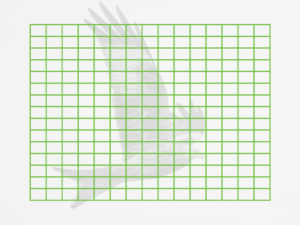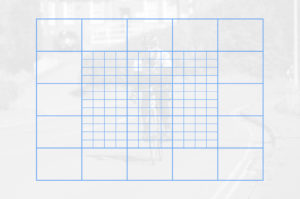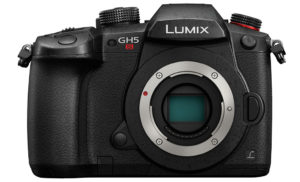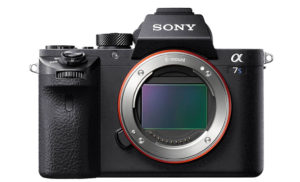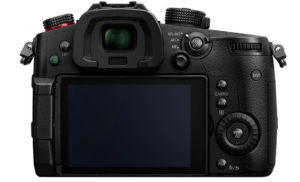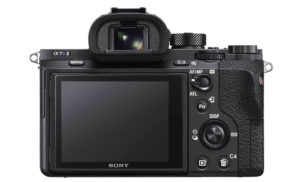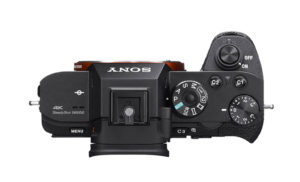The GH series from Panasonic has always been more video-centric in the eyes of consumers despite offering an equal set of features for stills as well. But in the case of the GH5s, we have a product that is all about the movie capabilities in that it targets professional filmmakers and production companies more than ever before.
The new camera is a direct rival to another product that focuses more on video than stills and has been very popular amongst video makers: the Sony A7s mark II. Of course, the question on all our minds is: how do they compare?
Ethics statement: The information supplied in this article is based upon our experience with the Sony A7s II and a quick hands-on with a pre-productions GH5S. If we have the chance to use them side by side in the future, we will publish a full comparison. We were not asked to write anything about these cameras, nor were we provided with any sort of compensation. Within the article, there are affiliate links. If you decided to buy something after clicking the link, we will receive a small commission. To know more about our ethics, you can visit our full disclosure page. Thank you!
1. Sensor
Unsurprisingly we begin with one of the most important differences: the sensor size. The Sony uses a 35mm format sensor that is four times larger than the four thirds chip found inside the Lumix camera. However the way in which these two sensors have been designed follows a similar logic.
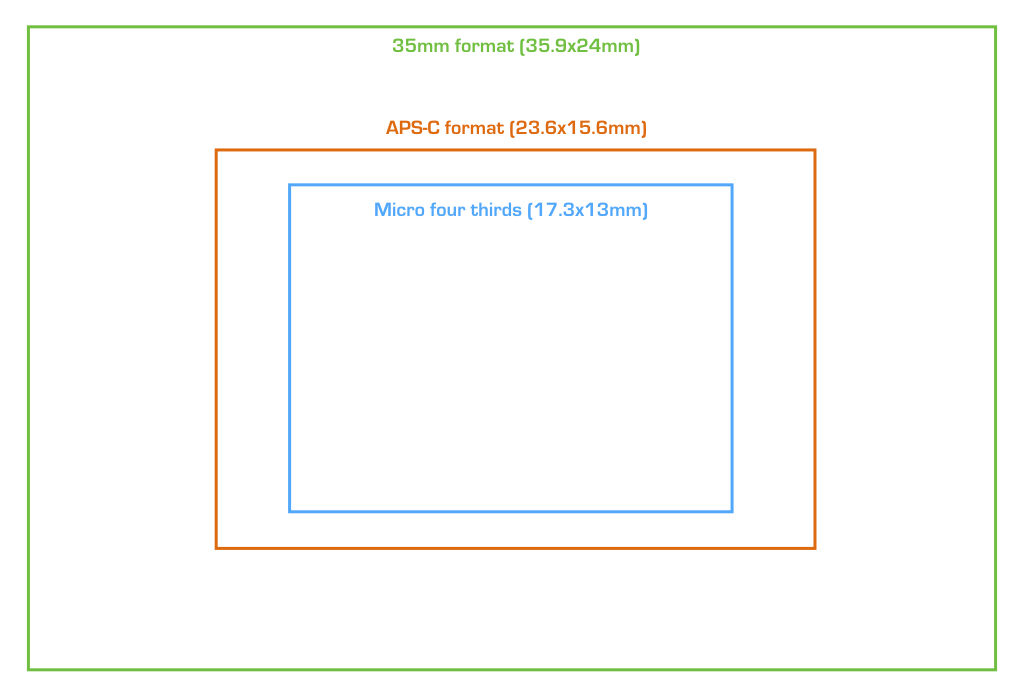
The GH5s features a new 10.2MP chip whose megapixel count is rather low by today’s standards but helps the ISO performance, which is exactly the same concept behind the 12.2 MP chip of the A7s camera. Fewer pixels spread across the surface means that they are larger, collect more light and produce less noise at high sensitivities than sensors with more megapixels.
Of course the larger sensor of the Sony should give better dynamic range and a lower signal to noise ratio. The smaller sensor of the GH5s will render more depth of field with the same aperture which may displease those looking for the shallowest depth of field possible, but in other cases, can be useful.
Another characteristic of the GH5s sensor is that it is multi aspect: the surface is slightly larger than the area covered by the lens and that allows you to to switch aspect ratios (4:3, 3:2, 16:9 etc.) while maintaining the same diagonal angle of view.

2. ISO
The GH5s offers a normal range of 160 to 51200 ISO with extended values down to 80 and up to 204 800 ISO. To achieve these rather impressive specifications (for a Micro Four Thirds camera), the camera uses a combination of a low megapixel count and Dual Native ISO, a technology Panasonic has already employed on a few professional camcorders (Varicam35 and AU-EVA1).
Instead of a single native ISO value, the GH5S has two: ISO 400 and ISO 2500. Native means that it doesn’t require a change in voltage to amplify the signal and gives you the best image quality possible when it comes to dynamic range and noise. So if for example I want to record at ISO 6400, the Lumix will amplify the gain from 2500 rather than 400. Less amplification means less noise. This is how Panasonic managed to improve the ISO range considerably in comparison to any other Micro Four Thirds camera on the market.
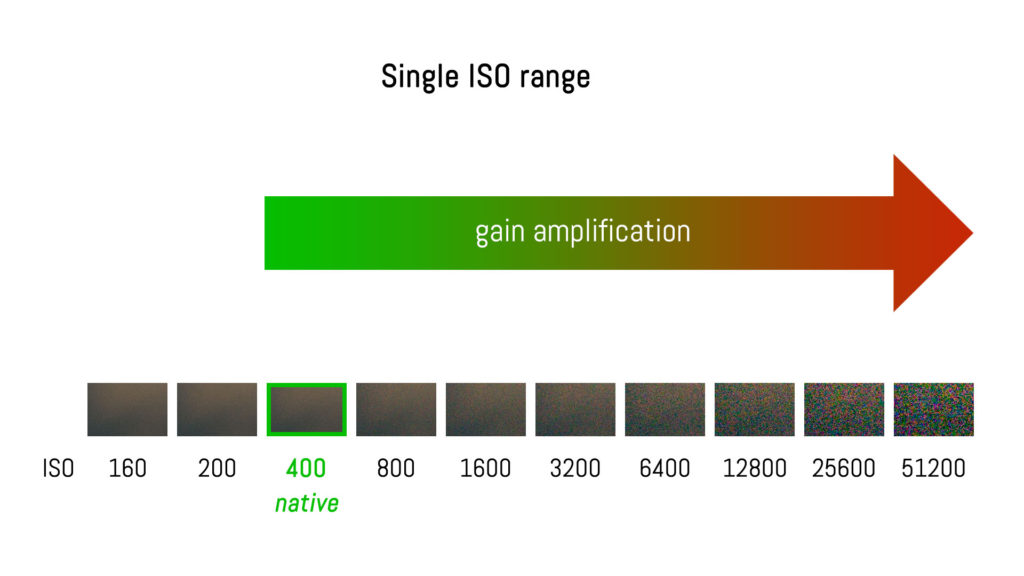
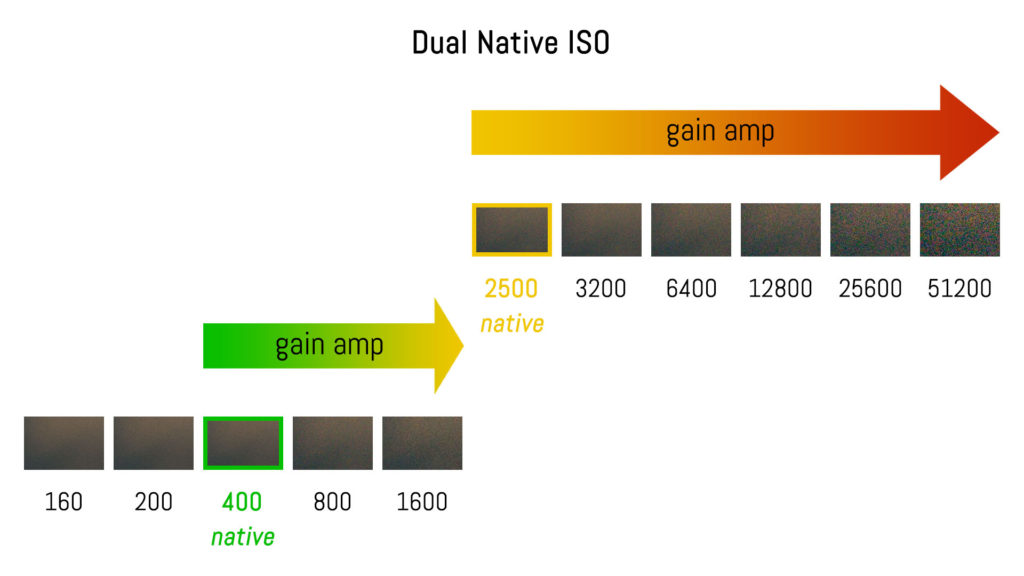
The A7s II has a single native ISO of 1600 and a range that goes from 100 to 102400, with extended values up to 409600. In this case it is the larger sensor coupled with the low megapixel count that helps you achieve better performance.
In the following videos (made by DPreview and Pro AV TV) you can get a nice first glimpse of how the Panasonic compares to the A7s II – via 43rumors
3. Video capabilities
The GH5s has an impressive list of formats and codecs for video to choose from. In 4K you can record up to 60p in 4:2:0 8-bit or up to 30p in 4:2:2 10-bit and 400Mbps. The 10-bit format gives you more colour information which is especially useful for colour grading. The GH5s and GH5 are, at the time of writing, the only two mirrorless cameras capable of 10-bit internal recording. The same options apply for the Cinema 4K format (17:9) and you also get an Anamorphic 4K mode that works up to 60p (8-bit only).
The A7s mark II can record 4K internally up to 30fps in 4:2:0 8-bit with the XAVC S codec and 100Mbps bitrate. You can get more colour sampling in 4:2:2 via the HDMI output but it remains 8-bit (the GH5s outputs 10-bit via the HDMI port).
The Lumix has better slow motion capabilities with a maximum of 240fps in VFR mode in Full HD. The Sony can record at 120fps by comparison. It is also worth nothing that the 4:2:2 10-bit option for the Panasonic is available in 1080p as well (200Mbps).
Also important to highlight is that the GH5s can record for an unlimited time in 4K and 1080p while the Sony has a 30 minute limit per clip.
Concerning the picture profiles, you can find two log gamma curves on the A7s II (S-Log2 and S-Log3) and one on the GH5s (V-Log L). The Sony has several customisable Picture Profiles inherited from the Cine-Alta professional series. The GH5s includes Cine-Like D, Cine-Like V, Like709 and a Hybrid Log Gamma profile. Other useful options you’ll find on the Lumix are waveform and vector scope monitors.
As for connectivity, the GH5s again offers more versatility with a full sized HDMI port, audio in and out and a USB Type C port. Note that the audio in port can be used with a microphone or line in source. The A7s II features a microphone input, headphone output and a Micro HDMI port.
Finally the GH5s features two SD-card slots that are compatible with the UHS-II standard (faster writing speed). You can record simultaneously to the two cards with the maximum quality (10-bit and 400mbps) or use the relay mode to start recording to the second slot once the first is full. The A7s II only has one UHS-I slot.
4. In-body stabilisation
Unlike most recent Lumix cameras, the GH5s doesn’t feature 5-axis stabilisation and must rely on the OIS of select lenses or third party stabilisation systems.
The A7s II integrates in-body stabilisation with 5 axes. It can work in conjunction with OSS lenses (3 axes on the sensor + 2 axes on the lens) and with manual focus lenses that don’t feature electronic contacts (3 axes only).
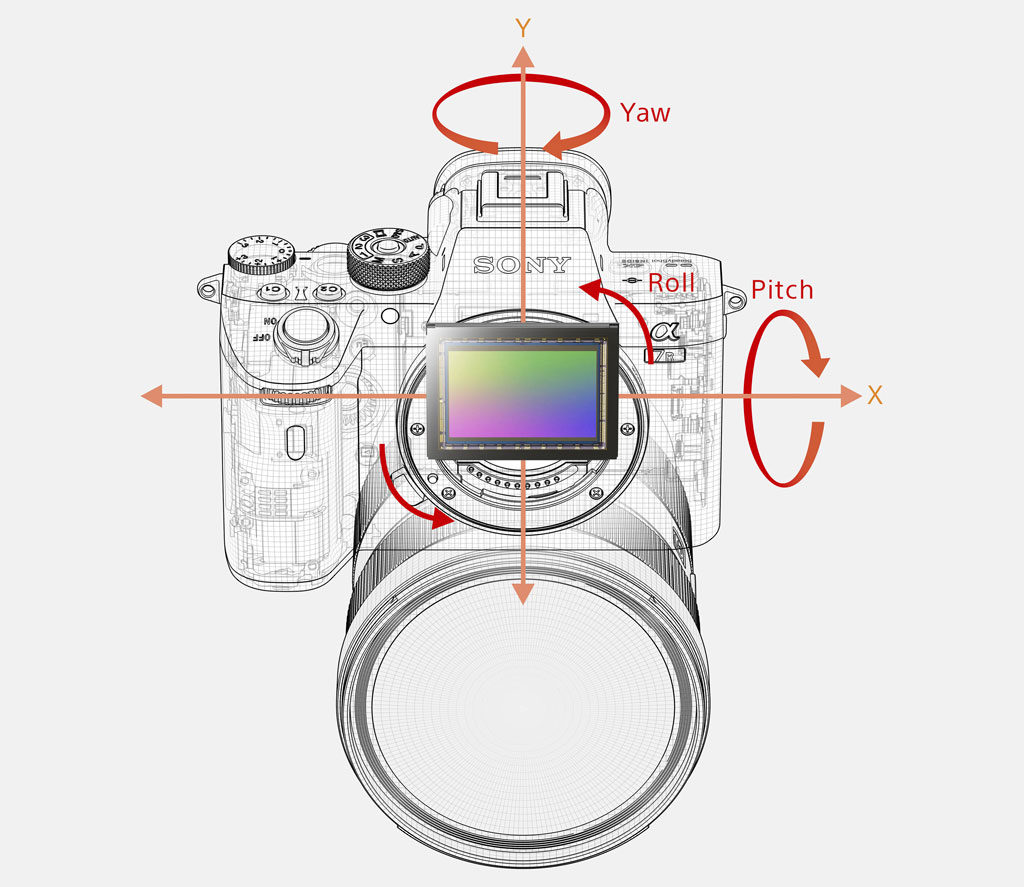
Our experience with the Sony stabilisation isn’t 100% positive especially for video as the camera tends to produce some jittering and doesn’t match the performance of other systems such as the E-M1 II from Olympus. A professional crew would be more likely to stabilise the camera with a hardware system which is why Panasonic decided to ditch the IBIS on the GH5s.
5. Autofocus and performance
The two cameras rely on a contrast detection AF system.
The GH5s uses the latest generation Depth from Defocus system with 225 focus points. It is not the fastest in the Lumix lineup but it is the most sensitive at -5Ev. The A7s II uses 169 points and has a minimum sensitivity of -4Ev.
In our experience, the Sony was rather slow with anything that moves at a decent pace. We haven’t tested the GH5s yet but the improvements made to the GH5 are rather good so hopefully this should carry over to the S model as well.
Concerning the continuous shooting speed, the GH5s is faster with a maximum of 12fps or 8fps with continuous AF. The A7s II can manage 5fps or 2.5fps with AE/AF tracking only.
6. Viewfinder and LCD screen
The GH5s features an OLED viewfinder with 3,680k dots, 0.76x magnification and a fast refresh rate of 120fps.
The A7s II uses an OLED panel too but with less resolution (2,360k dots) and a lower refresh rate of 60fps. However it has a slightly higher magnification of 0.78x.
Concerning the rear screen, the GH5s comes with a multi-angle LCD that is 3.2” in size, has higher resolution (1,600k dots) and features touch capabilities. The Sony monitor can only be tilted up and down, is slightly smaller (3.0”) with less resolution and has no touch gestures.
7. Design
The GH5s is the most robust camera of the two with a fully weather sealed body (dust, splash and freeze proof down to -10°C) while the A7s II is only dust and splash resistant. They both features a magnesium alloy chassis.
The Lumix is larger and heavier (138.5 x 98.1 x 87.4 mm and 660g) in comparison to the Sony (126.9 x 95.7 x 60.3mm and 627g).
The Panasonic camera has more physical controls with 16 function buttons, a drive dial and an AF joystick. The A7s II has a dedicated exposure compensation dial and 9 function buttons.
The GH5s has a more well organised menu system with a My Menu page where you can shortcut your favourite settings, as well as a Quick Menu. The A7s II menu is more time consuming to navigate but the Fn menu with 12 editable slots is quite handy.
8. Battery life
The GH5s uses the same battery as the GH5 which is very good. Of course 4K recording will drain it faster but it definitely lasts longer than the Sony battery. There is also the option of using a battery grip.
The NP-FW50 battery drains very quickly when you start recording 4K video. Sony includes two in the box but it won’t be enough for an entire day of shooting. A battery grip is also available.
9. Lenses
The GH5s uses the Micro Four Thirds mount, making it compatible with a vast selection of lenses from Lumix, Olympus and third party companies. The 2x crop factor when adapting a S35 or full frame lens can be an advantage or disadvantage depending on the focal length and shot you want to achieve but speed-booster adapters can be quite handy for that if you don’t want to lose too much of the original angle of view of the lens.
The A7s II is compatible with a good range of native FE lenses and you can mount all DSLR and full frame lenses via an adapter without losing the original field of view.
10. Price
The GH5s will retail for approximately $2500 / £2200 / €2550.
The A7s II is more expensive with a price tag of around $2700 / £2500 / €2600. Note that some cashback offers may be available in certain countries and at specific times of the year.
Conclusion
Although I have used and appreciated the great low light capabilities of the A7s II, I wouldn’t hesitate to get a GH5s for myself if I had to choose between the two.
It includes all the positive aspects of its twin sister, the GH5: better ergonomics, a user friendly body and menu system, and all the settings you need for professional video, with the added benefit of better ISO performance which has been, up until now, one of the only real limitations of the system.
The A7s II, by comparison, might become more of a niche product for those who desire that full frame look and require more extreme low light performance.
Check price of the Lumix GH5s on
Check price of the Sony A7s II on

